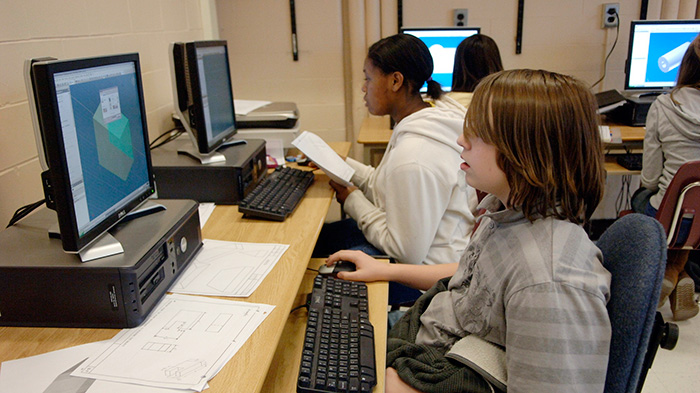In-person education is the traditional form of teaching, and it continues to be a mainstay in education today because it gives students the opportunity to form friendships, make connections, get involved in the school, and enjoy unique experiences (i.e. university campus life). Moreover, many prefer the in-person connections that can form between educators and their students.
Just like digital education, in-person courses have evolved since their inception. Face-to-face classes have adjusted to the digital world by incorporating technology and introducing innovative pedagogical practices. Both veterans and newbies to teaching in person can learn from the emerging trends and technologies in education.
Blending In-Person & Online
With the advent of the digital age, incorporation of technology in the classroom has become ubiquitous. Though some believe that the inclusion of digital elements in the physical space may herald the replacement of in-person instruction, the hybridization of instruction frequently succeedes in enhancing and complementing the in-person learning experience.
Technology Enhancement
In-person learning has adapted over time to continue meeting the needs of contemporary students. This adaptation includes bringing elements of online learning into the classroom. These online elements can help instructors meet students where they are through empathy and can help increase engagement in the classroom .
Online elements may also be helpful in reducing student anxiety as well as instructor bias. For instance, online office hours may be an option to introduce into your classroom for increasing comfort levels of students who are not as comfortable asking questions during a face-to-face class.
Online Grading
In-person class does not necessarily mean one must grade physical papers. Tools like Crowdmark allow graders to create digital assessments or upload physical assessments directly into an online marking platform. Online marking can facilitate the grading porcess because it is less time consuming than physically grading assessments. Instructors adopting the use of online grading platforms like Crowdmark are able to grade much faster and give richer feedback than traditional, in-person workflows offer.
There are also other benefits to online grading such as the convenience of collaboration between graders who can share a library of comments and associated points–ensuring consistency of grading. Crowdmark also offers open access to the feedback students have received. This access makes it easier for students to review concepts throughout the term and discover areas for improvement.
Student Engagement
In-person education requires students to be physically present in the classroom and to pay full attention to the lecture. Even when students are in class, though, they run the risk of being disengaged students due to many common distractions, such as phones and laptops. While many students use laptops for note taking, the difficulty of multitasking can often lead to wandering attention.
Having students actively participate in class forces them to stay engaged and helps with the learning process. Micro-assessments are a great way to keep students engaged in the classroom. These lower stakes assessments will help instructors see which topics students may be struggling with in the course. This works especially well in large classes because it can be difficult to maintain the attention of hundreds of students at a time. This gives them a unique way to engage in the material.
The future of in-person education will be interesting to witness. As of right now, its ability to adapt with the times will ensure the classroom remains full.
